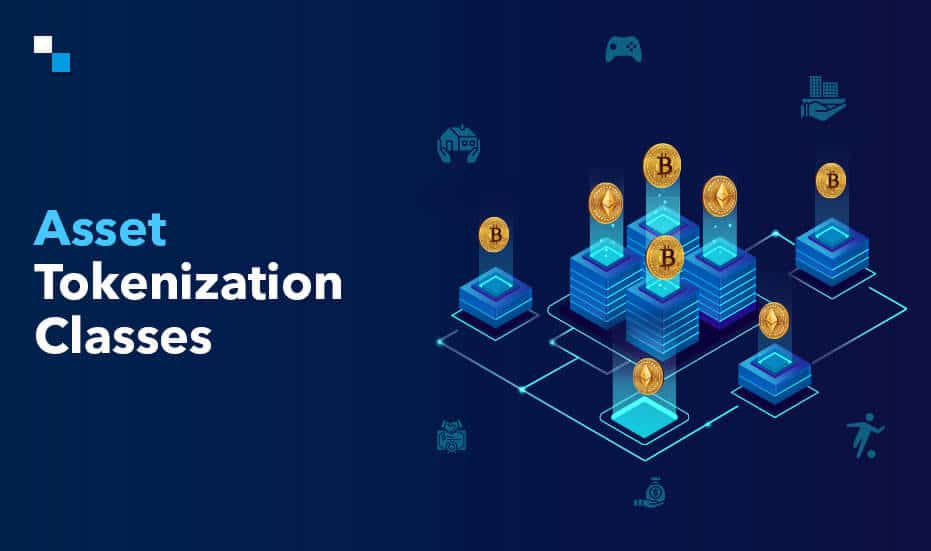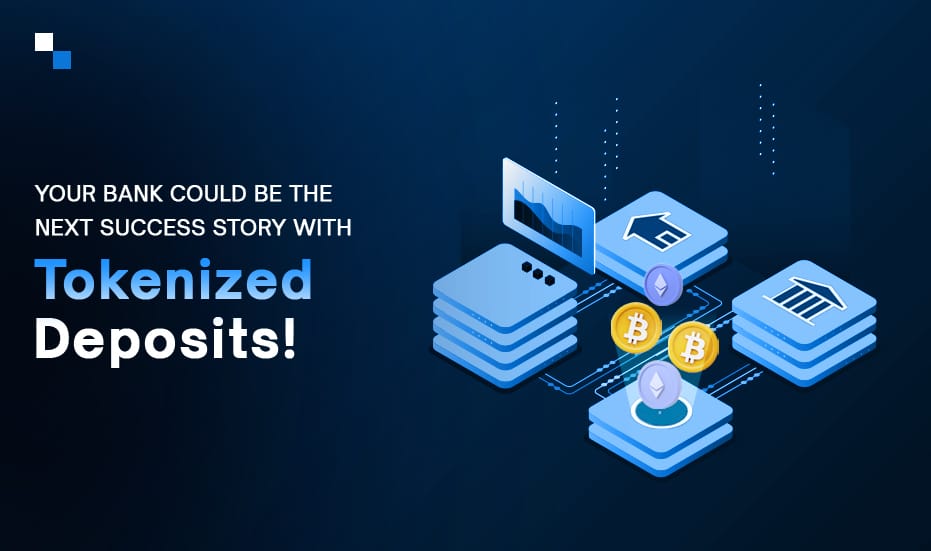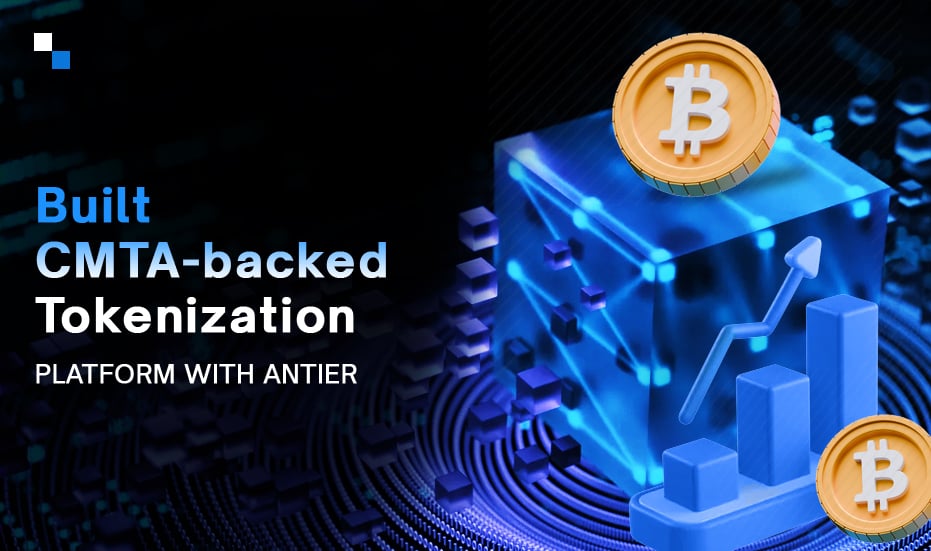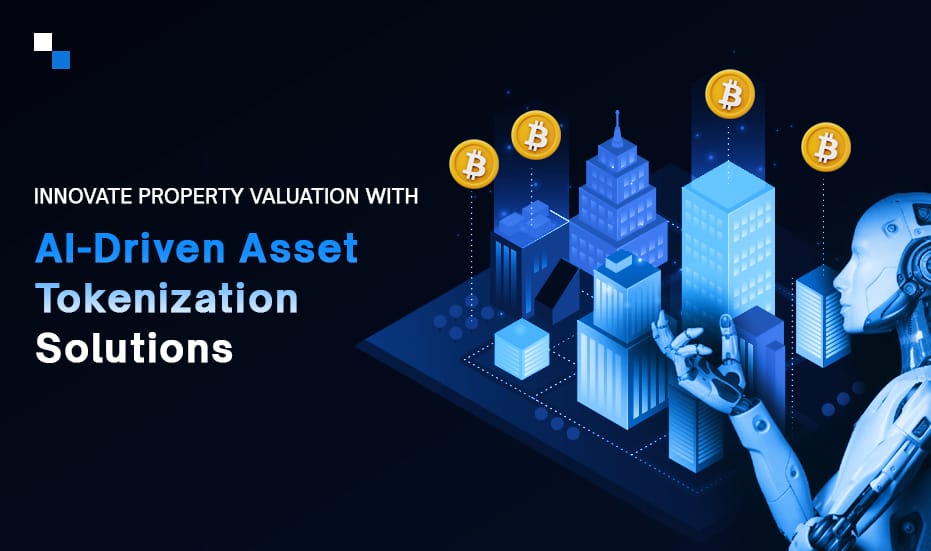
How Are ICO Development Solutions Reshaping The Gaming Landscape?
October 31, 2023
Are AI Crypto Coins The Catalysts of the Digital Currency Revolution?
November 1, 2023Real-world asset (RWA) tokenization is the process of representing ownership of real-world assets with digital tokens on a blockchain. Asset tokenization services can be used to tokenize a wide range of asset classes, including hedge funds, asset-backed securities, venture capital, fixed income, mortgage-backed securities, residential mortgage-backed securities (RMBS), art, collectibles, and real estate.
Each of these asset classes has its own unique characteristics and benefits, and each can be tokenized in a different way. This blog will have a detailed look at each asset class, with examples of tokenization and how it can be tokenized.
Top RWA Tokenization Classes
Let’s have a look at top RWA tokenization classes and discuss them in detail:
Hedge Funds
Hedge funds are investment funds that use a variety of strategies to generate alpha or returns that exceed the market benchmark. Hedge funds are often complex and illiquid, making them inaccessible to most investors. However, tokenizing hedge funds can make them more accessible and liquid.
One way of digital asset tokenization of a hedge fund is to use a fractional ownership model. It means that investors can purchase tokens that represent a fractional ownership stake in the hedge fund. It allows investors to invest in hedge funds with a smaller amount of capital and to gain access to liquidity that is not available in traditional hedge fund markets.
For example, a hedge fund that invests in private equity could tokenize its portfolio of investments. Each token would represent a fractional ownership stake in a specific private equity investment. Investors could then purchase tokens on a decentralized exchange (DEX) and sell them at any time.
Asset-Backed Securities (ABS)
ABS are financial securities that are backed by a pool of underlying assets. ABS can be backed by a variety of assets, such as mortgages, auto loans, and credit card receivables. Tokenizing ABS can improve the efficiency and transparency of the ABS market, and it can also make ABS more accessible to retail investors.
One way to tokenize ABS is to use a tokenized security (T-security) model, which means that each token would represent a fractional ownership stake in a specific ABS. For example, a mortgage-backed security (MBS) could be tokenized into a series of T-securities. Each T-security would represent a fractional ownership stake in a specific pool of mortgages. Investors could then purchase T-securities on a DEX and sell them at any time.
Venture Capital
Venture capital is a type of private equity that is invested in early-stage companies. Venture capital investments are often high-risk, but they can also offer high returns. Tokenizing venture capital can make it easier for investors to invest in venture capital funds and for startups to raise capital.
Asset tokenization offers great opportunities in venture capital. To tokenize venture capital is to use a security token offering (STO) model. Investors can acquire security tokens representing ownership stakes in venture capital funds, making it easier to invest and access liquidity. For example, a venture capital fund that invests in early-stage technology companies could launch an STO to raise capital. Investors could then purchase security tokens on a DEX and sell them at any time.
Fixed Income
Fixed income securities are debt securities that pay a fixed interest rate over a fixed period of time. Fixed income securities include bonds, certificates of deposit (CDs), and money market accounts. Tokenizing fixed income securities can make them more liquid and accessible to investors.
One way to tokenize fixed income securities is to use a tokenized bond model. Each token would represent a fractional ownership stake in a specific bond. For example, a government bond could be tokenized into a series of T-bonds. Each T-bond would represent a fractional ownership stake in the bond.
Mortgage-Backed Securities (MBS)
MBS are financial securities that are backed by a pool of mortgages. MBS are often used by investors to generate a stream of income or to hedge against interest rate risk. Tokenizing MBS can improve the efficiency and transparency of the MBS market, and it can also make MBS more accessible to retail investors.
One way to tokenize MBS is to use a tokenized mortgage model. Each token would represent a fractional ownership stake in a specific mortgage. Asset tokenization allows investors to invest in mortgages with a smaller amount of capital and to gain access to liquidity that is not available in traditional scenarios. For example, a mortgage on a single-family home could be tokenized into a series of T-mortgages. Each T-mortgage would represent a fractional ownership stake in the mortgage. Investors could then purchase T-mortgages on a DEX.

Residential Mortgage-Backed Securities (RMBS)
RMBS are a type of MBS that are backed by a pool of residential mortgages. RMBS are one of the most popular types of fixed income securities in the world. Tokenizing RMBS can make them more liquid and accessible to investors.
One way to tokenize RMBS is to use a tokenized RMBS model. This means that each token would represent a fractional ownership stake in a specific RMBS. For example, a pool of 100 residential mortgages could be tokenized into a series of T-RMBS tokens. Each T-RMBS token would represent a fractional ownership stake in the pool of mortgages.
Art and Collectibles
Art and collectables are unique asset classes that can be difficult to value and to trade. Tokenizing art and collectibles can make it easier to trade by making them more accessible to a wider range of investors.
One way to tokenize art is to use a non-fungible token (NFT) model. It means that each token would represent a unique piece of art. It allows investors to own and trade unique pieces of art with ease.
For example, a painting by a famous artist could be tokenized into an NFT. The NFT would represent ownership of the painting, and it could be traded on a DEX.
An example of tokenizing collectibles would be a rare sports card that could be tokenized into a T-collectible. The T-collectible would represent ownership of the sports card, and it could be traded on a DEX. Without a doubt, Asset tokenization has revolutionized the art and collectibles sector.
Real Estate
Real estate is a valuable asset class, but it can be illiquid and expensive to invest in. Tokenizing real estate can make it easier to invest in real estate with a smaller amount of capital and to gain access to liquidity that is not available in traditional real estate markets.
One way to tokenize real estate is to use a fractional ownership model. Investors can purchase tokens that represent a fractional ownership stake in a specific property. For example, a commercial building could be tokenized into a series of T-real estate tokens. Each T-real estate token would represent a fractional ownership stake in the building. Investors could then purchase T-real estate tokens on a DEX and sell them at any time.
Gaming
Gaming is another asset class that can be tokenized. Tokenized gaming assets can include in-game items, characters, and even entire games. One way to tokenize gaming assets is to use a non-fungible token (NFT) model. This means that each token would represent a unique gaming asset. This allows gamers to own and trade unique gaming assets with ease.
For example, a unique in-game weapon could be tokenized into an NFT. The NFT would represent ownership of the weapon, and it could be traded on a DEX.
Another way to tokenize gaming assets is to use a fractional ownership model. This means that investors can purchase tokens that represent a fractional ownership stake in a specific gaming asset. For example, a popular video game could be tokenized into a series of T-gaming tokens. Each T-gaming token would represent a fractional ownership stake in the game. Gamers could then purchase T-gaming tokens on a DEX and sell them at any time.
Sports
Tokenized sports assets can include player rights, contracts, team ownership, and even stadium naming rights. One way to tokenize sports assets is to use a security token offering (STO) model. This means that investors would purchase security tokens that represent ownership stakes in sports assets.
For example, a professional sports team could launch an STO to raise capital. Investors could then purchase security tokens that represent ownership stakes in the team. Another way to tokenize sports assets is to use a non-fungible token (NFT) model. Each token would represent a unique sports asset. This allows fans to own and trade unique sports assets with ease.
For example, a unique moment from a sporting event, such as a touchdown pass in a Super Bowl or a home run in a World Series game, could be tokenized into an NFT. The NFT would represent ownership of the moment, and it could be traded on a DEX.
Get Obligation Free Quote
[widget id=”custom_html-3″]
Conclusion
RWA Tokenization is a new and innovative way to represent ownership of real-world assets. Tokenization has the potential to revolutionize the way that real-world assets are managed and traded. Looking for a reputed asset tokenization platform development company? Partner with Antier, the prominent tokenization platform development services provider that has made its mark globally by providing exceptional services and solutions. Get in touch today to discuss your requirements.



